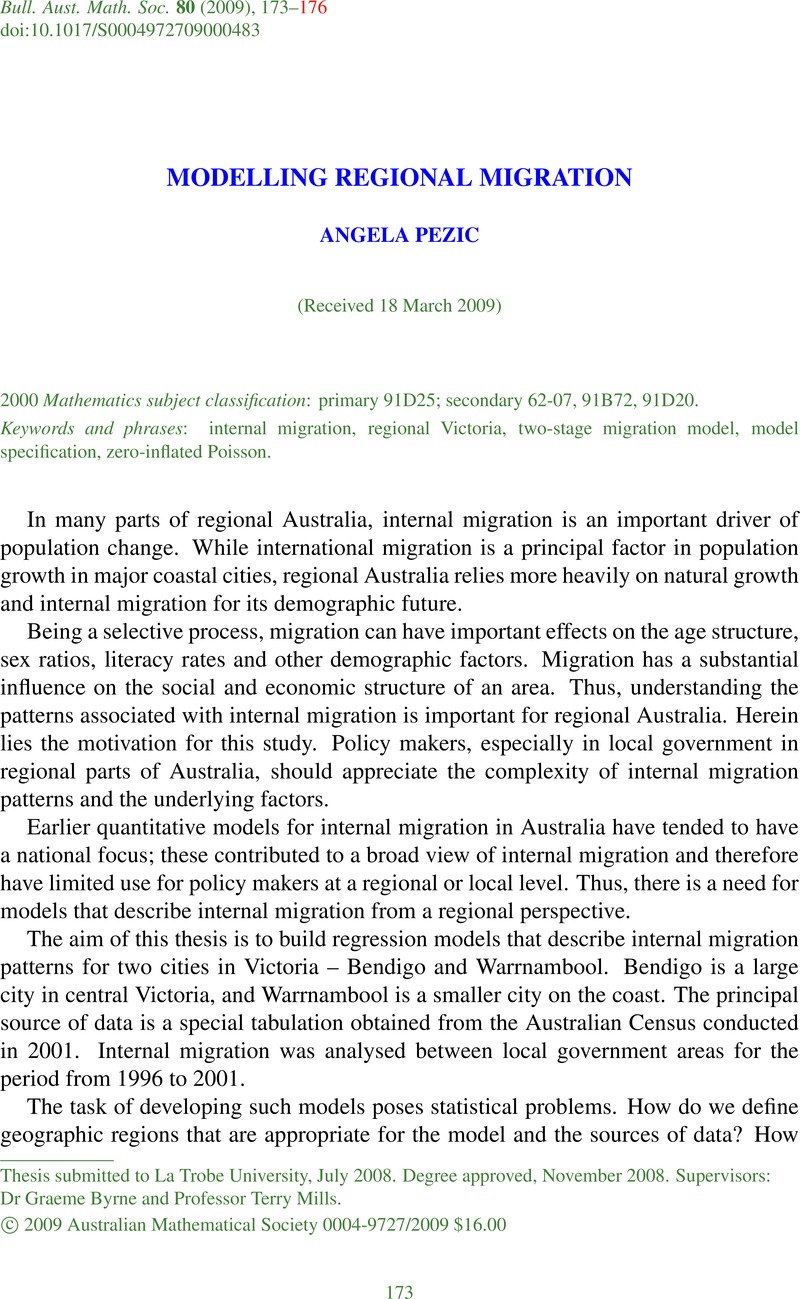No CrossRef data available.
Article contents
MODELLING REGIONAL MIGRATION
Published online by Cambridge University Press: 11 June 2009
Abstract
An abstract is not available for this content so a preview has been provided. As you have access to this content, a full PDF is available via the ‘Save PDF’ action button.

Keywords
MSC classification
- Type
- Research Article
- Information
- Copyright
- Copyright © Australian Mathematical Society 2009
Footnotes
Thesis submitted to La Trobe University, July 2008. Degree approved, November 2008. Supervisors: Dr Graeme Byrne and Professor Terry Mills.
References
[1] Alonso, W., National Interregional Demographic Accounts: A Prototype, Monograph 017 (Institute of Urban and Regional Development, University of California, Berkeley, 1973) [online]. Available: http://iurd.berkeley.edu/PDF/MG17.pdf [Accessed 19 June 2008].Google Scholar
[2] Alonso, W., ‘A theory of movement, in: Human Settlement Systems (ed. N. M. Hansen) (Ballinger, Cambridge, MA, 1978), pp. 197–211.Google Scholar
[3] Austin, P. C. and Tu, J. V., ‘Bootstrap methods for developing predictive models’, Amer. Statist. 58(2) (2004), 131–137.Google Scholar
[4] Cameron, A. C. and Trivedi, P. K., Regression Analysis of Count Data (Cambridge University Press, Cambridge, 1998).Google Scholar
[5] Green, R. D. and Doll, J. P., ‘Dummy variables and seasonality – A curio’, Amer. Statist. 28(2) (1974), 60–62.Google Scholar
[6] Stillwell, J., ‘Inter-regional migration modelling: a review and assessment’, in: Proceedings of the 45th Congress of the European Regional Science Association (ed. P. Rietveld) (European Regional Science Association, Amsterdam, 2005), p. 770
[online]. Available: http://www.ersa.org/ersaconfs/ersa05/papers/770.pdf [Accessed 25 June 2008].Google Scholar
[7] Vuong, Q. H., ‘Likelihood ratio tests for model selection and non-nested hypotheses’, Econometrica 57(2) (1989), 307–333.Google Scholar
[8] Wilson, A. G., ‘A family of spatial interaction models and associated developments’, Environment and Planning A 3 (1971), 1–32.Google Scholar




